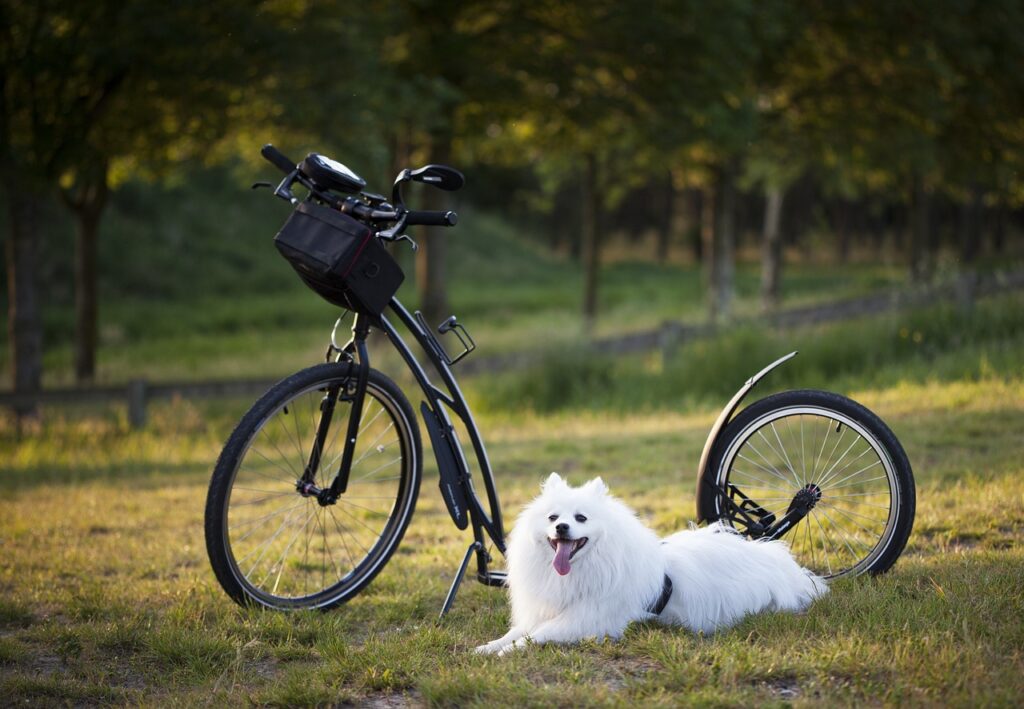
If you’ve ever wondered about the advantages of training your four-legged friend, you’re in for a delightful surprise. Training your dog not only fosters a stronger bond between you and your furry companion but also brings about a plethora of benefits. From improved obedience and better behavior to enhanced mental stimulation and increased socialization, the advantages of training your dog are boundless. So, grab those treats and get ready to embark on an exciting journey of transforming your dog into a well-behaved and happy member of your family.

Benefits of Training a Dog
Training a dog not only helps in improving their behavior but also strengthens the bond between you and your furry friend. It offers numerous benefits that contribute to their physical and mental well-being. From behavioral control to mental stimulation and from physical exercise to socialization skills, training provides a range of advantages that make it an essential aspect of owning a dog. Let’s delve into each of these benefits in more detail below:
1. Behavioral Control
Training your dog plays a crucial role in teaching them how to behave appropriately in different situations. It helps them understand what is expected of them and how to respond to various commands. By instilling good behavior, you can ensure their safety and prevent any potentially harmful or dangerous actions. Whether it’s teaching them to sit, stay, or walk on a leash without pulling, training helps in establishing clear boundaries and promoting obedience.
Obedience Commands
Training your dog to respond to obedience commands is beneficial not only for their own safety but for the well-being of those around them. Commands such as “sit,” “stay,” and “come” help in controlling their actions and preventing any undesirable behaviors. It allows you to manage situations effectively, whether you are at home, in public places, or during interactions with other people or animals.
Potty Training
One of the first steps in dog training is potty training. By teaching your dog where and when to eliminate waste, you can maintain cleanliness in your home and prevent accidents. Potty training establishes a routine for your dog, ensuring that they understand when it’s time to go outside to relieve themselves.
2. Strengthening the Bond
Training sessions provide an excellent opportunity for you and your dog to strengthen your bond. Through positive reinforcement and consistent training, you build trust and establish a deeper connection with your furry companion. Working together as a team cultivates mutual understanding, enhancing your relationship and creating a harmonious living environment.
Positive Reinforcement
Positive reinforcement is a fundamental aspect of dog training. By rewarding your dog with treats, praise, or playtime when they exhibit desired behaviors, you encourage them to repeat those actions. This positive approach creates a positive association with training sessions, making them enjoyable for both you and your dog. It strengthens the bond between you, as your dog learns to associate your commands with positive experiences.
Communication
During training, you communicate with your dog using verbal and non-verbal cues. This helps in developing effective communication skills between you and your furry friend, enabling you to understand each other’s needs and intentions. As you learn to interpret your dog’s body language and they learn to respond to your commands, the trust and bond between you grow stronger.
3. Mental Stimulation
Training exercises the mind of your dog, providing them with mental stimulation that keeps them engaged and prevents boredom. Mental stimulation is crucial for dogs of all ages, as it keeps their brain active and prevents destructive behaviors, such as chewing on furniture or excessive barking.
Problem Solving
Training often involves problem-solving tasks, where your dog must figure out how to respond to a command or achieve a desired outcome. This mental challenge stimulates their problem-solving abilities, leading to improved cognitive skills. It keeps their mind sharp and engaged, preventing them from becoming restless or disinterested.
Focus and Concentration
Training sessions require your dog to focus on you and follow your instructions. This helps in developing their concentration skills and teaching them to pay attention to your commands, even in distracting environments. Improved focus and concentration are valuable skills that extend beyond training sessions and contribute to their overall behavior and well-being.

4. Physical Exercise
Training sessions are not only mentally stimulating but also provide an opportunity for physical exercise. Regular exercise is essential for maintaining your dog’s physical health, preventing obesity, and promoting overall well-being.
Physical Commands
Certain training exercises, such as teaching your dog to walk on a leash without pulling or engaging in agility training, involve physical movements that provide exercise for your dog. This physical activity helps in burning off excess energy, keeping them physically fit and reducing the likelihood of behavioral problems caused by pent-up energy.
Daily Routine
Training sessions can be incorporated into your dog’s daily routine, ensuring that they receive regular exercise. By making training a part of their daily activities, you can promote a healthy and active lifestyle, benefiting both their physical and mental health.
5. Socialization Skills
Training your dog helps in developing their socialization skills, enabling them to interact positively with other dogs, animals, and people. Proper socialization is crucial for a well-adjusted and happy dog, and training plays a significant role in achieving this.
Encouraging Positive Interactions
During training sessions, you can expose your dog to various social situations and environments. This exposure helps in reducing fear and anxiety, allowing them to feel more comfortable in new surroundings and around unfamiliar dogs or people. Through positive reinforcement, you can encourage your dog to engage in positive interactions and learn appropriate behaviors when interacting with others.
Improving Confidence
Training builds your dog’s confidence, enabling them to handle different social situations with ease. As they learn to respond to commands and exhibit appropriate behavior, their confidence grows, allowing them to approach new experiences and interactions with a positive attitude.

6. Safety Measures
Training your dog contributes to their safety by teaching them to respond to commands that ensure their well-being. Whether it’s coming when called, staying away from hazardous objects, or avoiding dangerous situations, training plays a vital role in keeping your dog safe.
Recall Commands
Teaching your dog to come when called is a crucial safety measure. It allows you to maintain control over your dog in potentially dangerous situations, such as when they are about to roam onto a busy road or encounter a potential threat. A well-trained dog that responds reliably to recall commands has a higher likelihood of avoiding accidents and staying safe.
Avoidance of Toxic Substances
Training your dog to avoid eating or chewing on toxic substances, such as certain plants or cleaning products, is essential for their safety. By instilling this behavior through training, you can minimize the risk of poisoning or other health issues caused by accidental ingestion of harmful substances.
7. Good Manners
Training your dog instills good manners, making them well-behaved and a joy to be around. Whether you have guests visiting or are out in public, a well-mannered dog reflects positively on you as an owner and creates a positive impression on others.
Polite Greetings
Training helps in teaching your dog to greet people politely, without jumping up or displaying overexcited behavior. By training them to wait calmly and politely for attention, you can ensure that your dog is welcomed in various social situations.
Leash Etiquette
Walking on a leash without pulling is an essential skill that contributes to good manners. It allows you to enjoy walks with your dog without the constant strain and frustration of being pulled around. Training your dog in leash etiquette promotes a relaxed and enjoyable walking experience for both of you.
8. Reducing Anxiety and Stress
Training helps in reducing anxiety and stress in dogs, improving their overall well-being. By providing structure and predictability through consistent training, you can help your dog feel more secure and less anxious in different situations.
Confidence Building
Training sessions help in building your dog’s confidence, reducing their anxiety in unfamiliar environments or when encountering new experiences. As they become familiar with different commands and behaviors, they gain confidence in their abilities, which translates into reduced overall anxiety and stress levels.
Mental Engagement
The mental stimulation provided by training exercises helps in diverting your dog’s focus from anxiety-inducing triggers or situations. By keeping their mind occupied, training prevents them from fixating on stressful stimuli and helps in managing their anxiety more effectively.
9. Sense of Purpose
Training gives your dog a sense of purpose, making them feel valued and contributing to their overall happiness. Dogs thrive on having a job to do and training provides them with the opportunity to fulfill this need.
Task Accomplishment
As your dog learns and masters various commands and behaviors through training, they experience a sense of accomplishment. This sense of achievement boosts their self-esteem and provides them with a positive outlet for their natural instincts and energy.
Working Dogs
Certain breeds are known for their working abilities, such as herding, retrieving, or search and rescue. For these dogs, training is not only beneficial but necessary to fulfill their natural talents and desires. By engaging them in specific training exercises aligned with their breed’s strengths, you allow them to utilize their skills and maintain their sense of purpose.
In conclusion, the benefits of training your dog are numerous and essential for their overall well-being. From behavioral control and strengthening the bond to mental stimulation and physical exercise, training contributes to a happy and fulfilling life for your furry friend. Additionally, it enhances your relationship with them and ensures their safety in different situations. So, start training your dog today and unlock the countless advantages that come with it!

